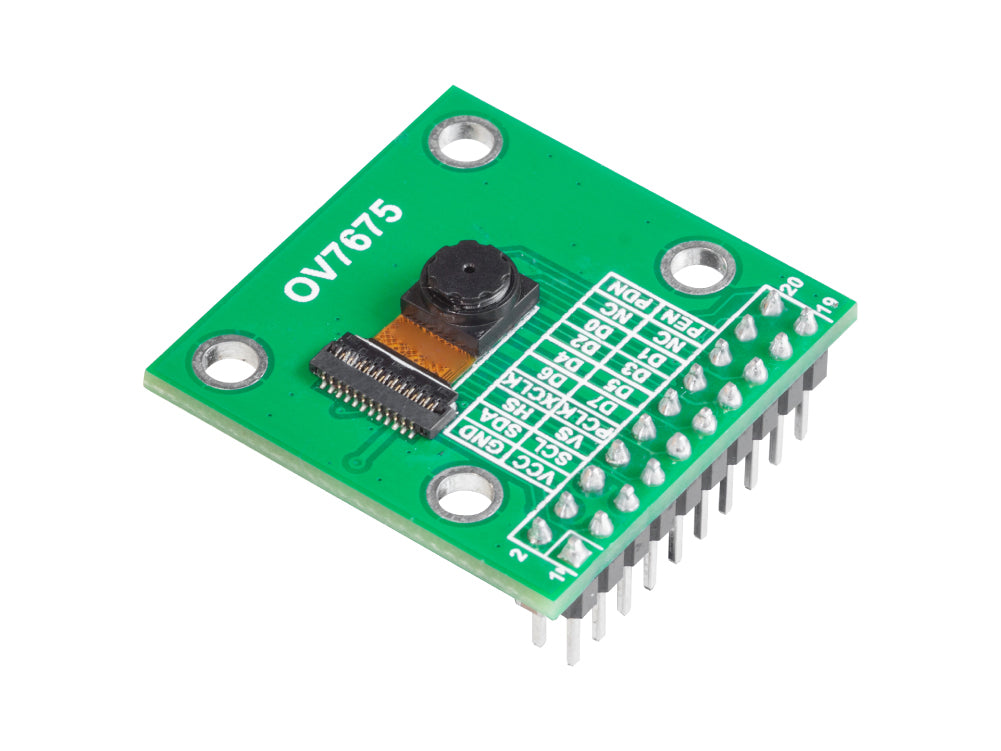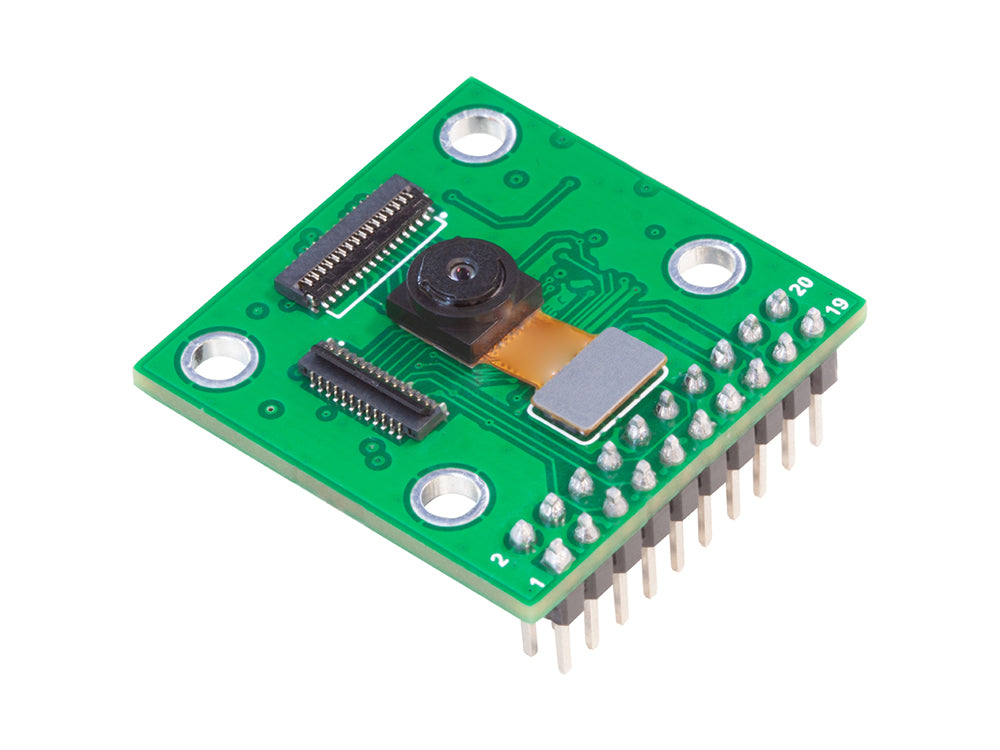defragster
Senior Member+
... no words ...
//byte swap
for (int i = 0; i < numPixels; i++) pixels[i] = (pixels[i] >> 8) | (((pixels[i] & 0xff) << 8));tft.writeRect(CENTER, CENTER, Camera.width(), Camera.height(), pixels);Maybe. Not sure how to change or the like.If the only thing being changed is the location of the pixel buffer (DMAMEM vs SDRAM) so all the other code is exactly identical... maybe it's those BMCR0/BMCR1 register settings causing reads/writes to happen in the wrong order?
I have not run into this yet... But have in the past. Also have in the past run into issues where one or more of the jumper wires would come lose or the like, which is why when we were in the beta cycle for the T4.1 and later Micromod, created at least one test board that had the 2x9 pin pattern for the OV7670. I have not found my MicroMod one yet... Lost a lot of things after I organized my office several months ago. Now can not find anything.One other thing with the camera and the board I am using is that I had to add 4.7k pullups to SDA/SCL to get the camera to be detected reliably with the sdram board.


SDRAM.begin();
Serial.println("Before camera start"); Serial.flush();
if (!cam.begin(CAMERA_R640x480 /*CAMERA_R320x240 */, IMAGE_MODE, 10)) {
blinkLED();
}
uint8_t *fb_mem = (uint8_t *)SDRAM.malloc(640 * 480 * 2 + 32);
fb.setBuffer((uint8_t *)ALIGN_PTR((uintptr_t)fb_mem, 32));It would be super cool if you could film the display while moving the camera, to see how good the performance is.@KurtE and I have been testing an OV7670 + spi displays (ili9341 and 9488). While testing the camera using extmem was getting what I would call halo effects:
View attachment 33189
Switching to the pixel buffer in DMAMEM that affect clears up drastically.
View attachment 33190
Maybe time for some one to test with cameras and the like for more application type testing.
Note: tried 133 and 166Mhz for the SDRAM. Also I am using @KurtE's variant version to get the added pins
Tried with using GPIO version and FlexIO version - seeing same thing.
@KurtE - feel free to add anything.
Think that was asked a couple times on the forum but I don't think it would be able to directly drive a HDMI screen. I did play with this thing:With all this cool stuff going on, could the Teensy output a HDMI signal and receive touch signals from a HDMI touch monitor?
Interesting, seems like there's a hole in the market. Or there's simply not people wanting such solutions.The chips to convert RGB to DVI/HDMI seem surprisingly rare. There's a couple from Analog Devices but they're fairly expensive. Most projects seem to go for an FPGA instead.
I would to. Like something based around the ADV7513, that takes basic RGB signals and I2S/SPDIF audio and outputs HDMI up to 1080p. But apparently there's issues getting HDMI encoders without a HDMI license, due to the mandatory content protection rubbish. DVI doesn't have that restriction and you can pretty much just feed those signals into a HDMI plug, but you lose audio support and all those designs are pretty much discontinued.Interesting, seems like there's a hole in the market. Or there's simply not people wanting such solutions.
In my head I'd love an IC or a board that does exactly that. Takes 8, 16, 24 bit lines and converts it to HDMI.
The resolution doesn't seem to be limited (at least up to 1080p) but the issue with VGA is that it's analog... so you either need a lot of resistors for an R2R ladder (roughly 17 for an 8-bit channel, times three channels) or a 3-channel high speed DAC... in which case you may as well go the extra mile and get a TMDS encoder instead.The following suggestion is certainly not the same as directly generating HDMI signals from the Teensy. However, acknowledging that some potential resolution may be lost, what about generating VGA signals (IIRC, already been done) & using one of the commonly available VGA-to-HDMI adapters for an alternate video output testbed ??
Interesting stuff. Loosing the audio is bad ofc, but there are scenarios where only video is required. In such cases it should be possible then.I would to. Like something based around the ADV7513, that takes basic RGB signals and I2S/SPDIF audio and outputs HDMI up to 1080p. But apparently there's issues getting HDMI encoders without a HDMI license, due to the mandatory content protection rubbish. DVI doesn't have that restriction and you can pretty much just feed those signals into a HDMI plug, but you lose audio support and all those designs are pretty much discontinued.
